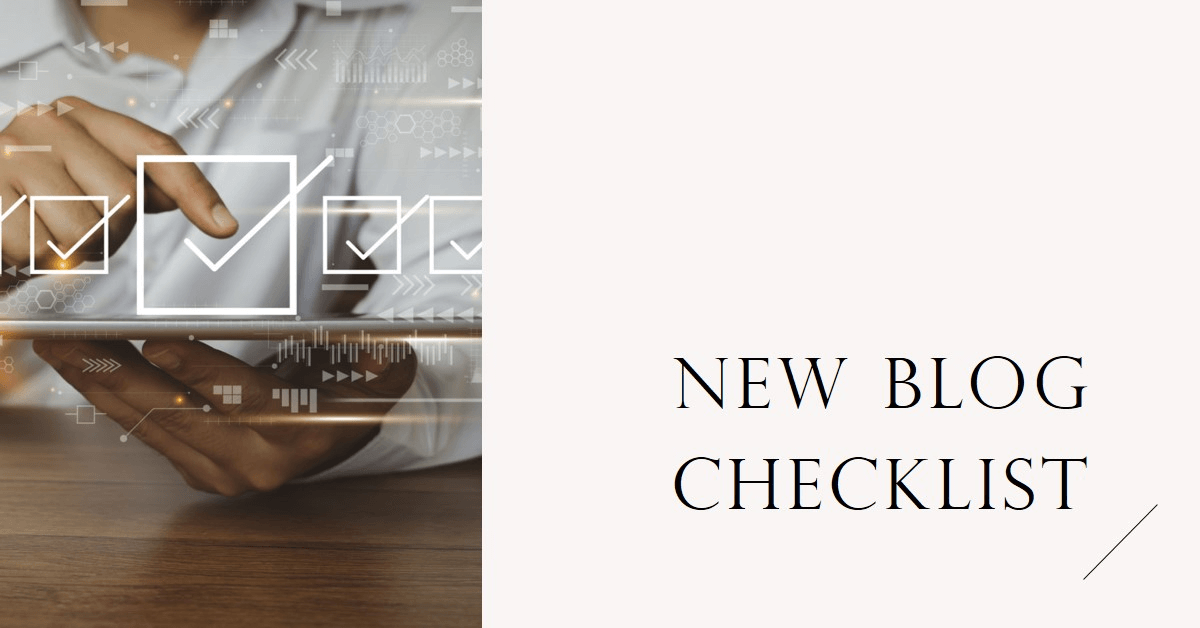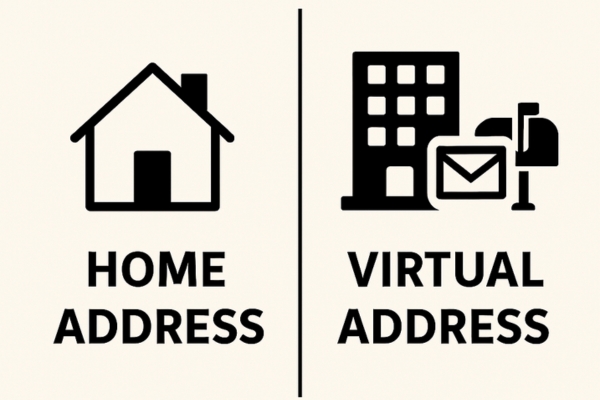If you’re thinking about starting a new blog in 2023, there are several things you must first consider. From finding your niche and target audience to getting reliable hosting to optimizing your content to perform better, you’ll need to go over each step to succeed.
Review our new blog checklist, and see what you must do before launching a blog. Spending extra time on the new blog checklist can ensure you’re creating a blog that will reach many readers and have a lot of traffic.
New blog checklist
Before starting a new blog, you’ll need to go over the following steps:
Complete “new blog” checklist
If you find our short list intriguing and think you could use some help, we’ve written about every step of the way in more detail below. Read ahead to learn how to start a blog and everything there is to it.
Find your niche
You can’t become a doctor if you’ve been to law school, right? It’s the same thing with blogs. You’ll need to find your niche, which includes categories and topics of things that interest you and things that you’ll be interested to learn more about, and present to your readers with passion.
Suppose you’re into cars, motorcycles, and technology like smartphones, gadgets, computers, etc. You could start a blog about these topics, but you could also have articles on tech gadgets and computers inside newer cars or bikes, which would be more interesting than simply writing about cars.
Learn about your target audience
Before you start writing any articles, you’ll need to figure out who you’re writing them for, and that’s your target audience. If you want your blog to succeed and get lots of traffic, you’ll need to investigate and analyze your target audience and find out as much as possible about them.

If you’re writing for the wrong audience, no amount of keywords, marketing, and promotions will help you. No matter how good your blog is, how catchy your titles are, and how informative your articles get, it will feel like talking to a wall.
Set clear goals
When you find your niche and determine who your readers will be, you can start thinking about what you want to achieve by creating this blog. Is it your passion to write about these topics, or are you looking for a way to make some cash on the side? Those goals can be anything related to blogging.
Be realistic about your goals, put them down on paper, and add relaxed deadlines to these goals. For example, “By the end of 2023, I want to have this many monthly blog visits.”
Don’t set high goals in the beginning since you’re likely a novice at blogging, and it can be a recipe for disappointment and disaster as you’re still figuring things out and don’t know how blogging stuff functions.
Design your blog properly
Choosing the right blog platform can make your life much easier when starting a blog, but you’ll also need to adjust design elements to fit your style and complement your niche and articles.
Focus on the design of the homepage, buttons, dropdown menus, fonts, colors, etc. You want your homepage to catch the attention of new visitors and your website’s navigation to be as simple as possible for your existing readers.
Look at Apple, for example. Such a clean design is much better than something filled with buttons, images, and other graphics. Remember that your design elements might affect your website’s responsiveness, which is another reason to keep it simple.
Brainstorm topics
After you figure out your niche and find out who your audience might be and what they want to be explained and answered, you need to start creating engaging topics that combine these elements.
You can use search engines and see what others are searching for when they look up items in your niche. That will give you ideas about what you can write about, and you can brainstorm ideas for your next article.
Determine your branding
Once you know more about what you’re interested in, want to write about, and what your target audience wants to see, you’ll need to consider your articles, what they say about you, and how you handle certain things.
You’ll want to determine what your brand is all about, and that includes things from logos and colors to fonts, graphics, and style that your articles will use to how you’ll talk about things in your texts.
All these combined help create your brand; the more unique you are, the better it is.
Get reliable hosting
Having clear goals and knowing your target audience, what you’ll write about, and how often, you can effectively determine how many monthly visitors your blog will get. However, it’s always great to plan and think about growth. That way, you can figure out what hosting service you’ll need without overpaying.
Research different hosting providers, compare their prices, create a list of popular hosting services in your area, and choose one that can handle your website. Ensure that such a hosting service has all the features you might need, and remember to also look into their tech support, as unexpected disasters can always happen.
Do keyword research
Once you have everything related to what your blog is about figured out, you can start creating content for your blog and writing articles on the topics you’re passionate about.
However, for these articles to succeed and hit the first page of various search engines, you’ll need to do your research regarding popular keywords, which you’ll then need to incorporate into your texts.
Various tools can help you at this step, such as Semrush, and incorporating these keywords can increase your blog’s visibility and drive more traffic to your articles.

Semrush |
Semrush is the best all-around solution for businesses of all sizes. |
Set up your blog for SEO success
Although keywords are a great way to improve the blog’s visibility and increase its ranking on search engines, they’re not the only thing that can help your blog do better.
Some studies have shown that over 50% of organic traffic comes from search engine searches. That’s why optimizing your blog for search engines is an excellent way of driving more traffic and readers to your blog.
Various things affect work together and make excellent SEO, and you’ll need to research these and figure them out.
For example, SEO meta tags are a great place to start, and they include a meta title and meta description, which help search engines determine what your content is about.
Start promoting your blog early
Once you have certain things going for you, like an excellent blog design, catchy titles, informative articles, and great keywords, it’s time to start promoting your blog, and there are many ways you can do that.
Although social media ads have been popular recently, they’re not the only way to promote your blogs. Of course, ads on social media websites such as Instagram, Facebook, Pinterest, and even Reddit can be an excellent way of getting new readers, but they can miss your target audience.
You can also research similar niche blogs and other popular ones and get a collaboration going where you’ll link their websites in your articles, and they’ll do the same for you.
Create a content calendar
Although the best texts and articles are most often created when you write when you feel like it and not because you have to, that’s not something you can rely on with a new blog.
Sometimes you’ll write five items in one day, but then a dry period might hit, and you won’t feel like writing for weeks. That’s bad for your blogs, as even missing a week can reduce your blog’s visibility by a margin.
You’ll need to create a content calendar and stick to it. Even if you write five articles in a day, plan them out, and publish articles on a set plan that you’re comfortable with.
Measure and analyze your blog
Finally, there’s also the monitoring part, which will help you see how successful your blog is and how many visitors your website’s getting.
You can use Google Analytics and various other important analytics for this step. These tools can help track the website’s performance, traffic, popularity, and why and how someone clicked on your blog or article.

Hotjar |
Best for for marketers and companies. |
That can help you realize what you’re doing right or wrong and what needs to be adjusted or improved so that your content does better if it’s not doing well and does excellent if it was already doing good.
Conclusion
Starting a new blog can be challenging, but this list of essential steps can help beginners start writing what they’re passionate about.
These items include everything from finding your passions and learning about your readers to finding the perfect hosting service, optimizing your blogs for higher search engine rankings and better visibility, and monitoring how well your blog is doing.



